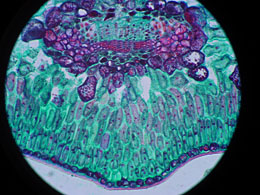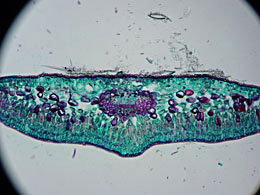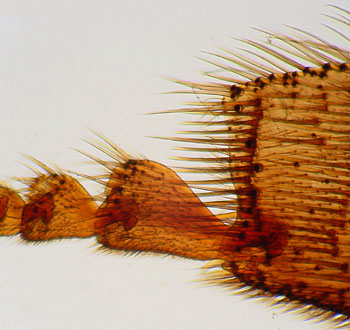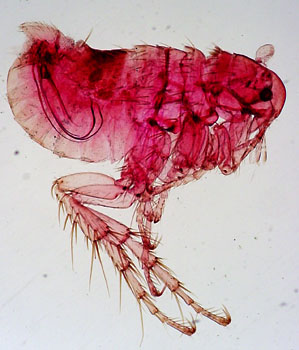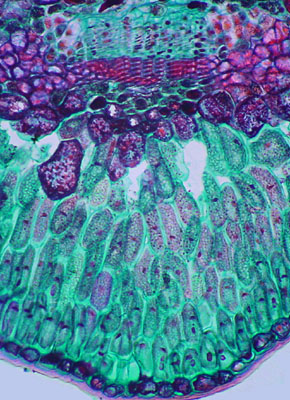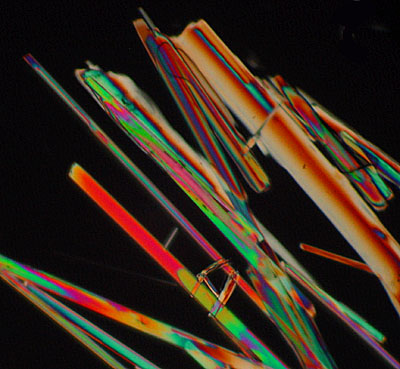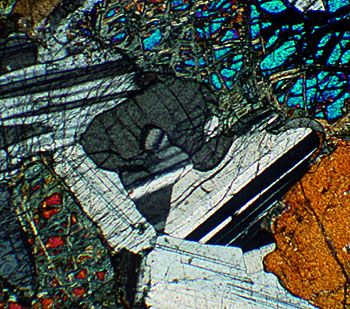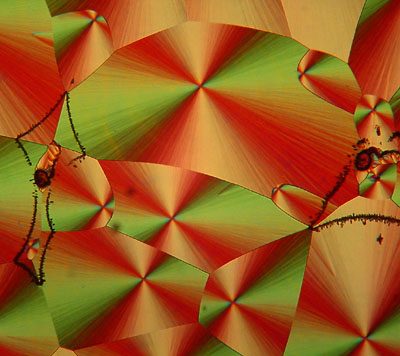The author owns the Sony S75 consumer digicam, which although bought primarily for conventional photography, I was rather keen to use it on my Russian Biolam for photomicrography if possible without undue extra expense. (My digital imaging to date with a microscope has been via video stills capture (VGA), which works well but is rather showing its age and limitations in these 'megapixel times'!)
The Sony S75 has the popular external zoom, large diameter lens design, which hasn't been as widely adopted for photomicroscopy cf. certain Nikon Coolpix models, where the latter's internal zoom and small diameter lens makes it easier to couple the digicam to microscope eyepieces. Many Coolpix users have shown that just by a mechanical close coupling of the digicam with a suitably matched microscope eyepiece / objective can give good results with little to no vignetting.
Gregor Overney in his excellent article (ref. 1) has shown that a similar model to the Sony S75 (the S70) can work well for photomicroscopy when used with a modified Nikon MDC relay lens. He also showed that by holding the S70 digicam up to a suitable eyepiece can, with care, give good results with acceptable vignetting.
Commercial relay lenses are available from at least three makers specifically for the Sony S series (and many other digicams) but they can be expensive. If the relay lens doesn't allow use of a microscope eyepiece, it may have been designed for specific modern objectives whereas the enthusiast could own a range of objectives of different makes, designs and vintages requiring varying degrees of compensation. If the relay lens is a bad match to an objective, significant aberrations may occur.
The author owns the standard eyepieces supplied with the 1970's Biolam (with low eyepoints and field nos.) where direct image projection was unsuccessful with the S75, but I was keen to try a low cost digital imaging route with existing optics. A reversed Nikon 50 mm SLR lens attached to the S75 works well for extended macro, so I've also tried it as a relay lens for photomicroscopy, so I summarise my results below. The general approach may be more widely applicable to other large diameter, external zoom digicams (e.g. the Canon G series, Coolpix 5xxx series or internal zoom, large diameter lens models like the Sony F505/707/F717) where the filter thread is comparable to that of a SLR standard lens.(Note added Sept. 2nd: In fact Guido Ballabio has previously shown that a reversed standard lens can also work with the Canon G1 for the images presented in this earlier article.)
The set-up
The complete set-up is shown below with key features described. It's a litle bulkier than a 35 mm SLR photo set-up but not unduly so, and will require a vertical monocular tube. It's mechanically and optically sound and uses my existing Nikon kit but the principle is the same for any SLR gear to hand. With the price of SLR secondhand kit plummeting, a set-up built from scratch could also be put together quite cheaply.
 A) A standard unbranded
SLR microscope photo-adaptor tube (a mechanical adaptor with
no internal lens elements (ca. £18 from dealers). The upper coupling is
a T2 adaptor for a camera's
lens mount. The internal fitting of the lower coupling clamps onto the microscope tube. A microscope eyepiece of choice can
be inserted at 'E/p' if required (see below).
A) A standard unbranded
SLR microscope photo-adaptor tube (a mechanical adaptor with
no internal lens elements (ca. £18 from dealers). The upper coupling is
a T2 adaptor for a camera's
lens mount. The internal fitting of the lower coupling clamps onto the microscope tube. A microscope eyepiece of choice can
be inserted at 'E/p' if required (see below).
B) The only DIY bit! A coupler for the male - male Nikon bayonets made from two Nikon rear lens caps 'superglued' together with a 33 mm hole drilled through. The sturdy plastic lens caps give a secure bayonet coupling and a handy quick-release point (the red spots aid alignment when attaching). If desired, SLR camera extension tubes can be inserted at the B/C interface. When used without an eyepiece I didn't use any extension tubes. With Russian 'K' series eyepieces, one 36 mm tube reduced vignetting.
C) The reversed lens used was a Nikon Series E 50 mm f1.8 lens which has a filter thread of 52 mm. The lens is always set at infinity focus and f1.8. (Branded lenses of this spec. often sell for less than ca. £30 on eBay. A reversed lens should have a symmetrical optical design; standard lenses usually do - see earlier article).
D) A 52 mm to 52 mm coupling ring, attaches the Sony lens adaptor to the reversed 50 mm lens. These coupling rings are readily available.
E) The Sony lens adaptor for the S series. This adaptor provides a 52 mm filter thread for accessories just beyond the max. extension of the 3x Carl Zeiss zoom lens.
Ideally, the set-up should have an external support, but the weight is centred along the support axis for this type of camera and at low to mid powers using the camera self-timer there didn't seem to be any undue loss of sharpness in the images taken due to camera shake. The set-up worked OK on the moving limb focussing Biolam without any need to stiffen the focus.
Some notes specific to the LOMO Biolam microscope and Sony S75 used are in a supplement (see link at end) and which may be of interest to owners of either.
The LOMO pre-DIN planachromatic objectives (and a modern 10x DIN achromat, see supplement) worked well with the relay lens for image capture with or without eyepieces. This provided a useful option for selecting field of view and mag. without increasing objective mag.
The extent of vignetting is dependent on the max. aperture of the SLR lens (f1.8 in this case). Vignetting may be more pronounced if used with an eyepiece (the LOMO eyepieces have low field nos. ca. 9 - 12 mm cf modern 18 - 20+ mm designs). With a higher optical zoom than the S75 (3x), a larger aperture relay lens and/or widefield eyepieces, little to no vignetting may be possible.
The projected image magnification increases with extension (i.e. as with a film camera body) which was easily increased if desired by inserting standard camera extension tubes. This may be useful for some subjects like diatoms where some projection magnification (unlike empty magnification) of a well resolved image can better enable the camera to capture the resolved detail.
| Effect of eyepiece on vignetting and field of view. Top right: LOMO K7x eyepiece (internal field stop ca. 12 mm), 3.5x objective, 36 mm extension tube on adaptor. At full camera resolution, ca. 1240 x 1240 pixel image can be cropped out (i.e. a 1.5 megapixel image). The linear field of view was ca. 50% of the eyepiece visual field. This is an advantage for eyepieces not designed for image projection. Lower right: no eyepiece, 3.5x objective, no extension tube (set-up shown above). A ca. 1830 x 1330 pixel image can be cropped out (i.e. a 2.4 megapixel image). The field of view is comparable to that visually if a 10x eyepiece had been used. Vignetting is now reduced and field of view increased without any noticeable increase in aberrations. |
Full frame images, 3x optical max. zoom, full aperture f2.5. Yew T/S stained leaf section, NBS slide. |
Typical results
From images of a test object, the reversed SLR lens is a good relay lens and match for the LOMO pre-DIN planachromatic objectives tried, without undue aberrations beyond that expected for these budget objectives / eyepieces (see supplement). A selection of images with prepared slides are shown below. As my interest is in images for Web pages, the master cropped images have been heavily resized so some Photoshop 'Unsharp mask' has been used to compensate for the softening effect of a resize. The contrast is a tad on the flat side 'out of the camera' so some tonal balance correction has also been made. Once the white balance had been set for the lamp, no colour corrections have been made.To date I haven't observed the Newton's rings type artefacts, but which have been reproduced when a Coolpix 4500 was mechanically coupled with the same LOMO eyepieces/objectives.
